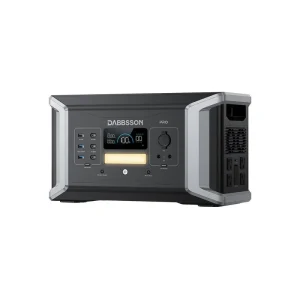A solar power station is nothing like a set of standalone solar panels, however they can work well together. One means, as we have seen with the DBS2300 Plus power station (2,300Wh and 2,300W), is a stored energy solution that provides immediate power for devices from smartphones to small appliances. Although there is an affordable range of portable power stations available for use, yet they can never be compared to the portability and indoor use of home backup, camping, emergency scenarios etc. This station packs lithium-ion or lithium iron phosphate (LiFePO4) batteries that last for a couple thousand cycles (i.e., the good ones around the 3,000 mark), so you can expect it to stick around in your power tool lineup for years before need of replacement.
By contrast, solar panels produce electricity from sunlight, which changes location to location based on time of day and weather conditions. The maximum power output kind of panels rated for 100-400 watts is something like 300-500Wh/day under optimal sunlight, which can cover basic energy demands but you will need somewhere to store that energy (power station are pretty good in this regard) if you want to run these perstendly. They provide clean, sustainable energy so users who are passionate about their carbon footprint like them. However,they highly depend upon sunlight; this decrease their reliability as standalone power sources in case of cloudy days or in night.

Systems such as DBS2300 plus is designed to work with Solar panels rated up 800W solar input to recharge the stored power, which means it is inherently good for the environment, allowing users to charge their battery in eco-friendly way. Yuma2This establishes a mixed kind of alternative, which combines two advantages of these systems; panels produce green electricity while this plant stores and uses this electricity when not generating at the daytime. Using this setup makes the users freer to enjoy power generation and always keep their devices up and running.
Solar panels and home power station have differing initial costs, For example, a high-capacity power station such as the DBS2300 Plus sells for about $1,500 to $2,000, while a solar panel system that can produce equivalent daily charge might retail for around $1,000 depending on wattage and quality. Although, solar panels involve nominal maintenance as time passes and is also considered as cheaper option for electricity but needs to be dependent on the battery for 24*7 availability. Due to this complementary nature, deploying a power station in combination with solar panels could prove beneficial for both on-grid and off-grid users when it comes to efficient and reliable operation.